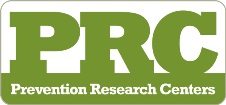Over the past 7 months, as I introduced myself to community groups in East Harlem, I was welcomed with either passionate interest or exasperated frustration. I was talking to groups at Union Settlement Association about nutrition, specifically how much sugar we consume from sugar sweetened beverages. Many people I’ve worked with are overwhelmed by facts, warnings, and tips about our daily habits, including the food that we eat and the way we exercise. Unlike campaigns focused on specific diseases that affect specific kinds of people, health campaigns focused on food choices, food access, and nutritional value are unique because they apply to everybody.
A positive trend in the recent wave of food-focused health advice is to think about specific steps that can make the biggest overall health difference. Instead of overhauling our diet all at once, it can be less intimidating to think about one aspect of our eating habits that can be modified. Taking changes step by step makes it more manageable and more likely to become a long lasting habit.
Using this approach, the NYC Department of Health (NYC DOH) has developed a program that focuses on the health consequences of consuming too much sugar, specifically from sugar sweetened beverages. Why pick on sugar? Due to heavy marketing, a cheap price tag, and cultural acceptance, sugary juices and sodas have gone from an occasional treat to a staple of our daily diet. We welcome soda at parties, encourage children to drink Gatorade during basketball practice, and forgive overworked students when they chug an energy drink during an all-nighter. While most of us also accept that sugar isn’t beneficial to our health, we downplay the negative long-term effects and regularly consume sugary treats.
Parents, youth, and seniors across East Harlem gasped with shock when confronted with the high amount of sugar in beverages like soda, sports drinks, iced teas, and fruit drinks. The American Heart Association recommends that we limit our consumption of sugar each day—men should consume no more than 8 teaspoons of sugar per day, women no more than 6 teaspoons, and children no more than 3 teaspoons. A typical soda contains 16 teaspoons of sugar and 240 calories. In one soda, you are consuming hundreds of calories that are empty of any beneficial nutrients. By taking a closer look at this one habit, we can eliminate over half of the extra sugar we consume each day. This initiative tackles one of the largest contributors to the current obesity epidemic in a manageable way.
With over 30% of individuals in the United States already either overweight or obese, and 25.8 million children and adults affected by diabetes, the time to begin looking for healthier options in our community is now. This campaign serves as a reminder that we don’t always have to make a big commitment or a big change in order to make a big difference. Simply choosing water over juice or soda, as small as it may sound, is an easy and money-saving step towards a healthier future.
Kathleen Cain is a Public Health Outreach Coordinator Union Settlement Association, the oldest and largest social services organization in East Harlem.

Joj04 October 4, 2026 - 10:09am
Great article! Nutrition is interesting, but it sometimes seems too complicated to bother figuring out because everything is bad or good depending on the day in the news. I like the visual of the sugar in the soda and I am all for small changes like substitutions as first steps to success.